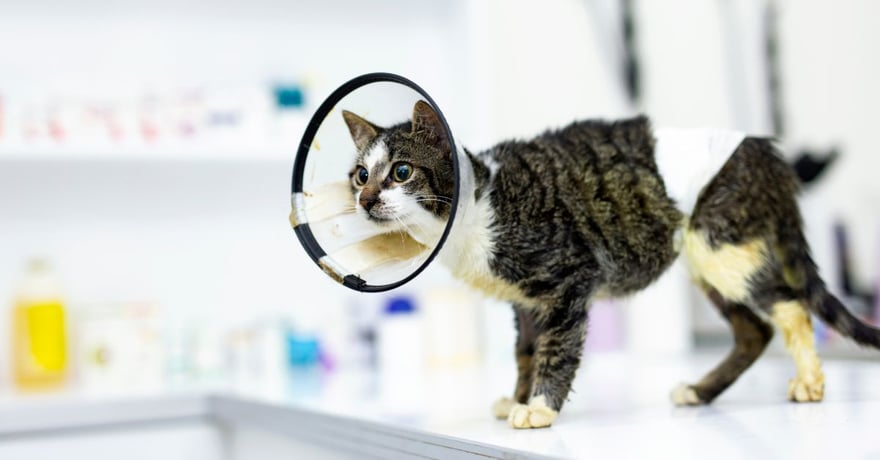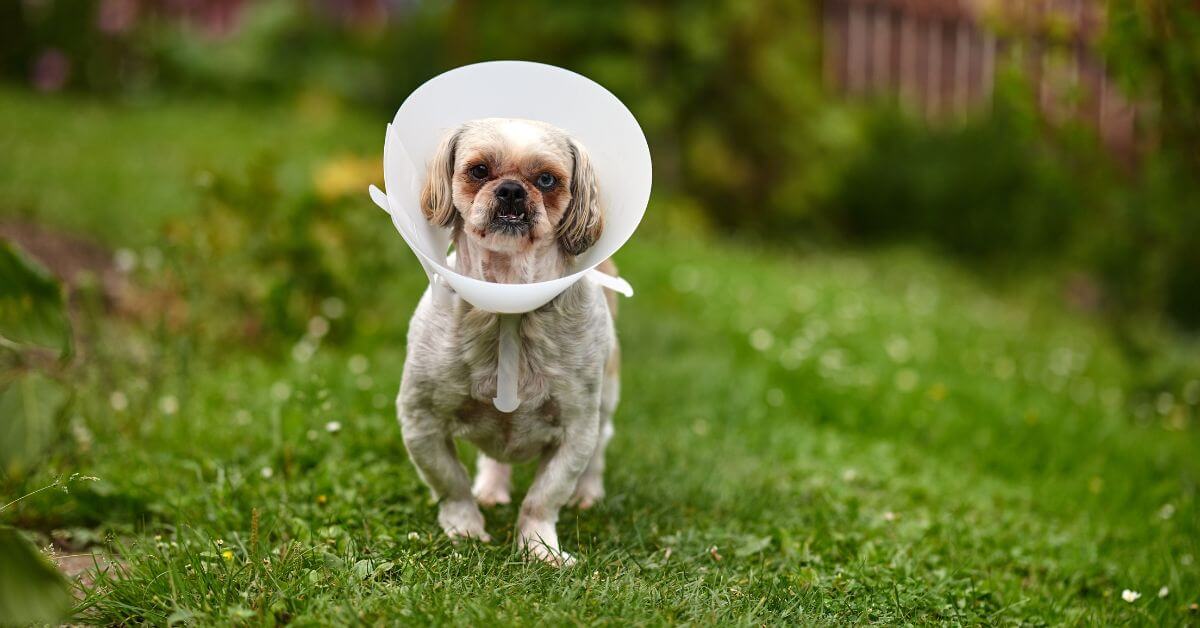Does Pet Insurance Cover Surgery?

You may be considering taking out a pet insurance policy to avoid unexpected costs if your furry friend requires treatment. With all the possible health issues your dog or cat can face, it's important to understand what's covered under your policy.
Some of the most expensive treatments can involve surgery.
The good news is that pet insurance policies in Canada generally cover a large variety of medical treatments, including surgeries. However, the way in which the surgeries are covered can vary significantly and will depend on the pet insurance provider and the policy you choose but there are several commonalities.
How Pet Insurance Works With Surgeries
Most insurance policies will have a set coverage limit per year. It means that once you've reached your policy's max annual limit, the provider no longer covers any additional eligible costs, including ones associated with surgery, or/and other eligible claims.
For instance, if your pet insurance plan has a coverage limit of $10,000 and the total surgery cost is $15,000, you'll have to pay for the remaining $5,000 out-of-pocket. This is just an example figure, always check with your provider directly to understand how surgery is covered in your particular policy.
Be aware that some procedures may be excluded from your coverage. Common examples include things like spaying and neutering as these are usually considered elective surgeries that don't fall under pet insurance coverage.
In some cases, pet insurance may even cover the cost of rehabilitation after surgery. The best way to find out if your provider does include rehabilitation is to ask them directly.
Can I get Pet Insurance Before Surgery?
If you learn your pet needs surgery and you scramble to buy pet insurance before the operation, please know that it will likely not be covered, since the condition emerged before the insurance policy was taken out. It’s a little like taking insurance out after your car has been broken into, it would not be covered.
Additionally, most pet insurance policies have a waiting or cooling-off period to ensure your pet is indeed healthy at the time of enrollment.
Regardless, insurance can prove beneficial for any unexpected future illnesses or accidents. If you're considering pet insurance, take the time to research different providers, compare their coverages, and choose the one that best fits the needs of your pet and your budget. Find out more by getting a quote from PHI Direct pet insurance.
Remember, pet insurance is a means of reducing risk. For many people, paying a predictable monthly premium is worth the reassurance of being able to provide for their pet's health under any circumstances, especially in emergency situations and protecting their household budget.
Common Surgical Procedures for Cats and Dogs
Even if your pet is healthy, there may come a time when it needs surgery. To make it easier for you to determine which treatments are covered, here's a list of some of the most common pet health conditions that can require surgery in cats and dogs:
- Spaying and neutering: Spaying (females) and neutering (males) refer to the surgical sterilization of pets to prevent reproduction. It's a common procedure, usually recommended to prevent overpopulation, reduce the risk of certain diseases, and curb behavioural issues associated with hormonal surges. Since spaying and neutering is considered non-essential it is not generally covered under pet insurance plans.
- Tumour removal: If a pet develops a benign or malignant tumour, surgical removal may be necessary. The procedure's complexity depends on the tumour's location, size, and nature. This is a great example of an unexpected (and major) health issue and as such, it is typically covered under pet insurance if it occurs outside of any policy restrictions.
- Orthopedic surgery: These surgeries involve the pet's skeletal system. They can range from fracture repairs and cruciate ligament repairs to more complicated procedures such as hip replacements or spinal surgeries.
- Cardiac catheterization: This minimally invasive procedure is used to diagnose and treat certain heart conditions. It allows vets to visualize the heart and surrounding vessels, conduct biopsies, and potentially even rectify certain heart defects without open-heart surgery.
- Foreign-body removals: Pets sometimes ingest foreign objects that can't pass through their digestive tract. If the object can't be removed by inducing vomiting or using an endoscope, surgery may be necessary.
- Biopsies: Biopsies involve taking a small sample of tissue for examination. This procedure helps to diagnose various diseases, including cancers. It can be done using a needle, an endoscope, or through an open surgical procedure.
- Eye surgeries: Various conditions can necessitate eye surgeries, including cataracts, glaucoma, or trauma to the eye. Procedures may involve repairing corneal ulcers, removing foreign bodies, or even performing a total eye removal (enucleation) in severe cases.
- Gastrointestinal surgeries: These surgeries address issues within the gastrointestinal tract, such as removing obstructions, treating severe cases of gastroenteritis, or resolving conditions like gastric dilation and volvulus (GDV) in dogs.
- Dental care and extractions: Dental procedures in pets can range from cleaning and polishing teeth to extracting damaged or diseased teeth. Good oral hygiene is crucial to a pet's overall health, and certain breeds are more prone to dental issues than others. This type of treatment is especially worth reviewing your pet insurance coverage for, as it occasionally is not covered or has specific exclusions or requirements to make it eligible for coverage.
- Urinary tract surgeries: Urinary tract issues can sometimes require surgery. This might involve removing bladder stones, treating certain forms of incontinence, or addressing blockages in the urinary tract.

Filing a Pet Insurance Claim
It’s important to take your pet for regular check-ups as this can help keep your pet happy and healthy, while preemptively finding an illness or condition before it becomes too severe, which can potentially avoid costly and painful surgeries or other procedures.
Pet insurance works with you paying your premium every month, or in some cases annually, and in exchange, the insurer will cover a portion of the cost when there's an eligible claim.
Ways to file a claim for your pet’s veterinary costs vary from pet insurer to pet insurer. When your pet insurer receives your claim, they'll review your documents and contact you to ask any additional questions, share the results of their review, and notify you when the claim is approved or denied.
PHI Direct offers you low-cost pet insurance premiums with quick payouts, giving you peace of mind if illness or accidents should occur.
Posted on September 21, 2023 | Categories: Cats Health Pet Insurance DOGS
Share


